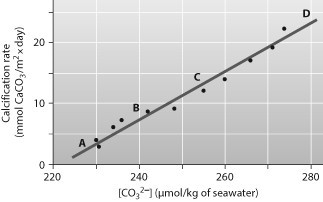A young scientist has discovered a new species of grub worm in the Amazon. He would like to explore the possibility that in this grub worm the codon CUC is the start codon and codes for methionine, not leucine as it does in other worms. To date, he has been unable to get his research funded, most likely because
A) worms have been extensively studied and their genomes are simple.
B) worms do not contain homologous genes to humans.
C) codons are generally the same in all worms.
D) the genetic code is universal to all species.
E) worms are difficult to maintain in the laboratory.
Ans: D) the genetic code is universal to all species.
You might also like to view...
What is a characteristic of T2 bacteriophage?
A. It does not require a host cell for replication B. The phage attaches to the cell wall of a target eukaryotic cell C. The phages injects its DNA into the host cell D. The new phages are formed outside the host cell
Below is a figure from an experiment that was performed to measure the effect of carbonate ion (CO32-) concentration on the calcification (growth) rate of coral reefs. At which point on the graph is the ocean pH the lowest?

A) A
B) B
C) C
D) D
Whether there is a net flow of fluid into or out of a capillary at a given point along its length depends upon
A) whether the fluid contains nutrients or wastes. B) whether or not the fluid contains oxygen. C) the balance between blood pressure and osmotic pressure. D) the needs of the tissue.
Which of the following pairs radioactive isotopes is used in radioactive fossil dating?
A. 40K and 14N B. 12C and 40K C. 12C and 40Ar D. 14C and 40K